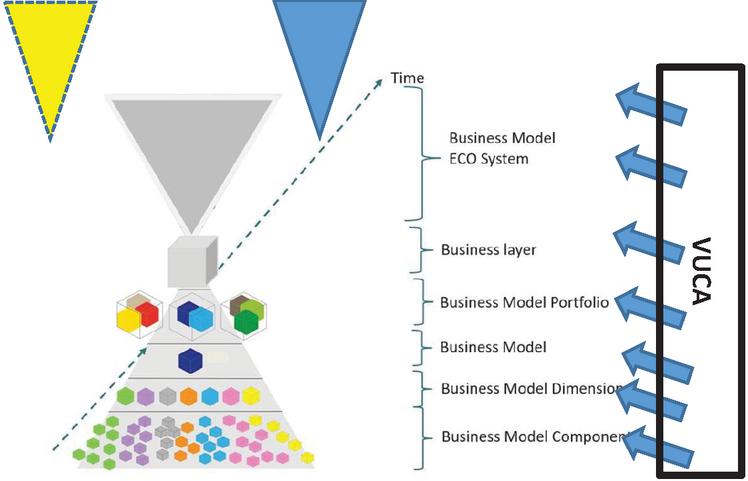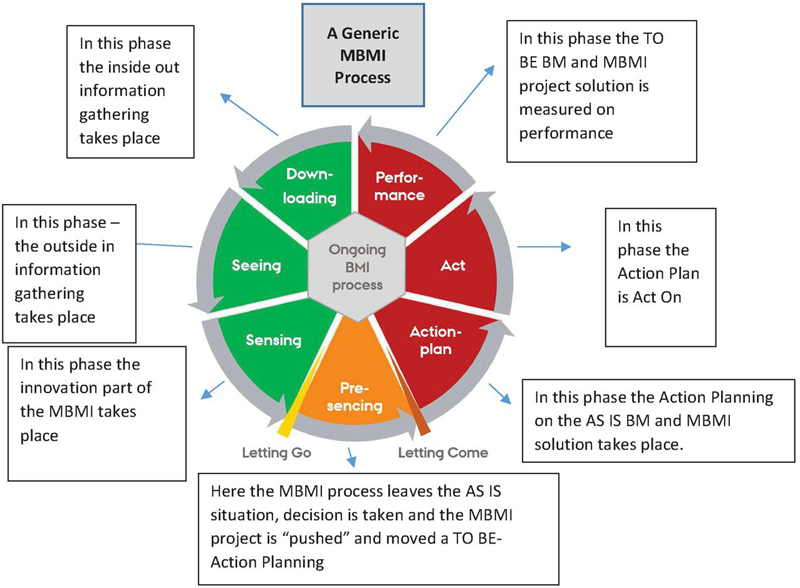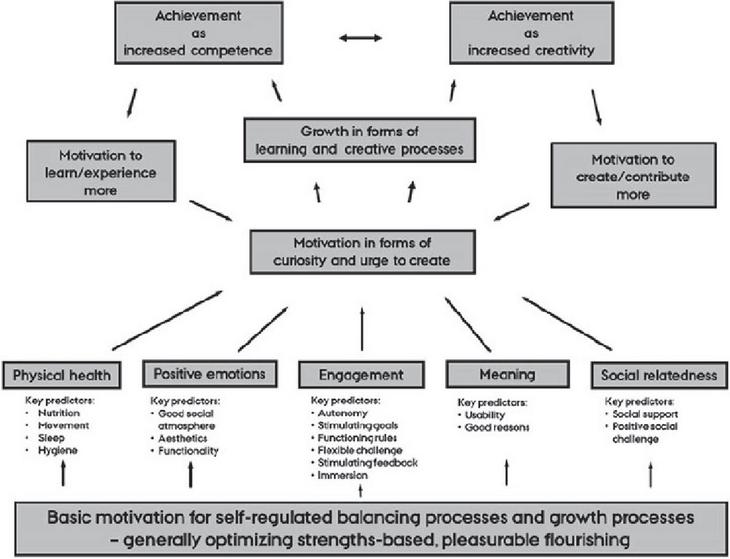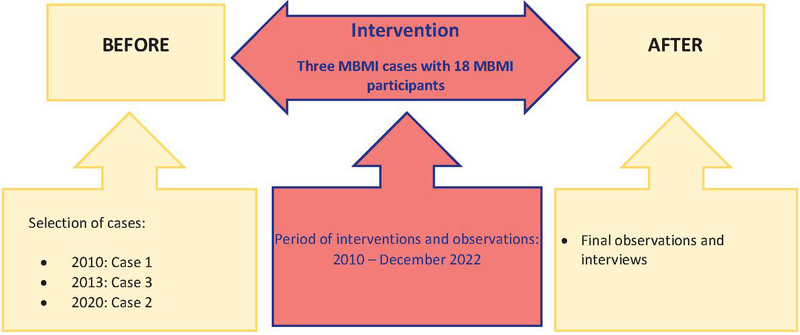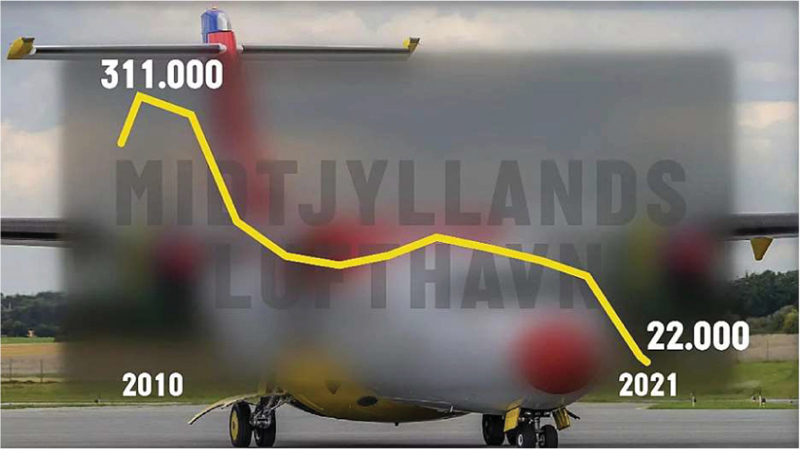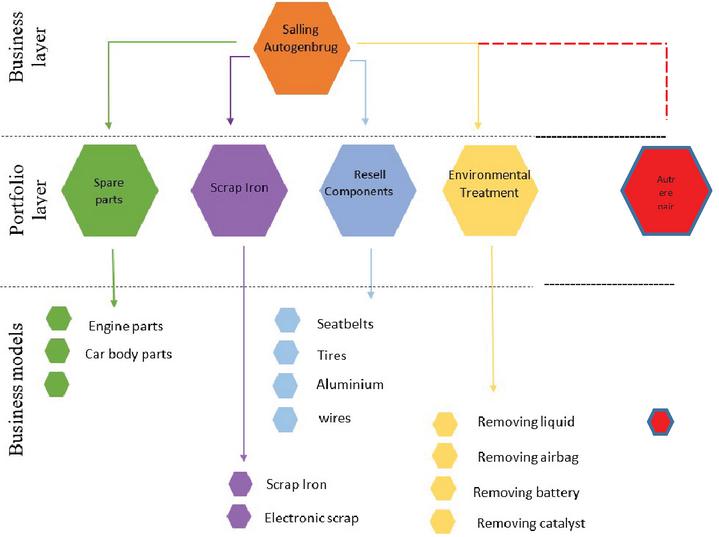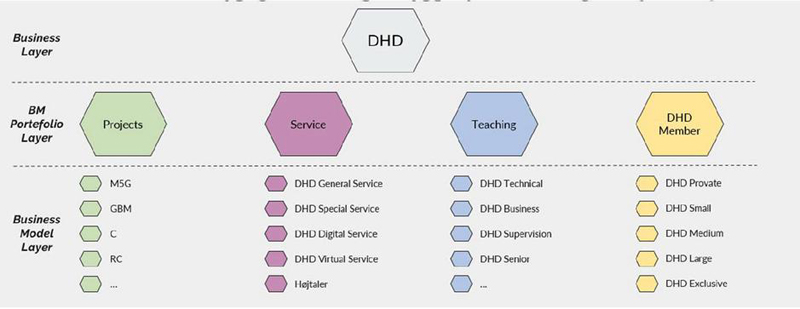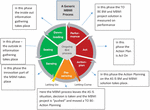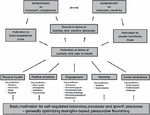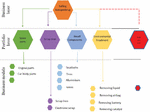The Impact of Positivity in Multi Business Model Innovation in a World of VUCA – How Can Positive Emotions Stimulate the MBMI Process?
Jane Flarup* and Peter Lindgren
CTIF Global Capsule, Kuttervej 13, DK-9990 Skagen Denmark
E-mail: flarup.jane@ctifglobalcapsule.org; lindgren.peter@ctifglobalcapsule.org
*Corresponding Author
Received 18 September 2023; Accepted 17 April 2024
Abstract
The importance of right speed, effectiveness, efficiency and learning in Multi Business Model Innovation (MBMI) is vital to meet today’s Volatile, Uncertainty, Complex and Ambiguous (VUCA) challenges to survive as a Business in Business Model EcosystemS (BMES). Coronavirus pandemic, war in Ukraine, volatile global material and resource prices and deliveries, cyberattacks make big external VUCA events to Businesses. VUCA can also come from the inside of the Business as management style change, interventions or a burn down of the Business.
How can Businesses under these VUCA conditions still do high quality MBMI? How can MBMI participants and teams in these processes increase their MBMI output?
This paper investigates the impact of positive emotions, relatedness and creativity on the outcome of three different MBMI processes in three different Business Model Ecosystems influenced by VUCA. Positivity, relatedness and creativity are hypothesized as components to strengthen the individuals’ search for meaning in VUCA and for their motivation to act in MBMI processes influenced by VUCA.
The study is conducted as a mix method research project in the view of MBMI and psychological theory – particularly the concept of positive emotions and relatedness as mental states for learning and knowledge creation. Interviews and observations show that individuals in networks and teams with a mood of positivity strengthen MBMI and the MBMI learning and creation process. Thus, our intention for further research is twofold: Training in positivity in teams can stimulate the courage to make disruptive solutions sufficient for VUCA. Secondly, in searching for the MBMI mindset psychological traits will be studied by the Big Five profile test. This opens for recruitment of participants to optimizing MBMI teams. Main contributions are:
• Positive emotions and relatedness strengthen the urge to learn and to create in VUCA – searching for meaning and motivation to act is related to this concept.
• Learning and creative processes increase, since the basis of positivity and relatedness in individuals, teams and networks are strengthened.
• Innovative outcome seems of a higher quality when based on positive emotions. Research in positive emotions in Business Model Innovation is rare.
• Positive emotion is the core concept and by training of positivity, it may strengthen the MBMI processes and the VUCA competences.
• The outcomes and solution of the MBMI processes in the case study show mainly incremental and radical MBMI – only one is disruptive.
Keywords: Positivity, multi business model innovation (MBMI) process, volatile uncertainty complex ambiguous (VUCA).
1 Introduction
Businesses today are challenged by a world that is increasingly Volatile, Uncertain, Complex and influenced by Ambiguity – (VUCA) (Warren, 1985). Coronavirus pandemic, war in Ukraine, global volatile material and resource prices, volatile and unsecure deliveries, unexpected attacks and cyber attacks, global push to complex and ambiguous Circular Green Business Model transformation (Pieoroni, 2019; Bocken, 2020) makes it very challenging and complex to operate and survive as a Business today. It lays a continuous pressure on change and survival of Businesses’ Business Models (BM), and at the same time to keep engagement among employees, users and customers, networks and those responsible for Multi Business Model Innovation (MBMI). The concept of Business refers to former concepts such as company, firm etc.
Today Businesses have to act with a MBMI approach as BM´s lifetime are continuously shrinking (Lindgren 2018) and the strategic Business game is no longer a single BM game – but a MBMI game. Compared to previous, this increases even further the pressure and importance of high speed (Fine, 1999), right speed (Lindgren 2017), effectiveness, efficiency and learning in MBMI (Lindgren, 2018). VUCA gives significant challenges to BM design, reconfiguration, and development (Lorenzo, 2017) today in Businesses. VUCA events influence can change managements style within days and minutes, and make managers act differently and volatile without employees knowing why. It leaves MBMI participants uncertain and with an understanding of management as complex and ambiguous.
V = Volatility means nature and dynamics of change, and the nature and speed of change forces and change catalysts. Volatility is the changing dynamic in a set of economic, environmental and social-categorization situations. The dynamic can change due to any shift in situations, whether it is economical, environmental, social, technical, biological or anything of the like. It can be triggered from inside and outside the Business or in the Business’ Business Model Ecosystem (BMES) (Lindgren, 2016) or from the Business’ internal ecosystem. It has proven to be very difficult to find the specific component that causes the change in situational, economical, environmental and social-categorization (Schick, 2017). Studies of SME´s in Greenbizz project (Greenbizz 2022) and ECSMV project (ECSMV 2022) volatile, uncertain, complex and ambiguous MBMI projects (Lindgren, 2022) showed many events of VUCA.
U = Uncertainty means lack of predictability, the prospects for surprise, and the sense of awareness and understanding of issues, events and Business management. Uncertainty in MBMI projects and processes is when the availability or predictability of information is unknown. Uncertainty often occurs in volatile BMES´s or Businesses that are complex in structure and actions involving unanticipated interactions and relations appearing uncertain. Uncertainty may occur in the intention to imply causation or correlation between internal Business units, external Business units and BMES to the MBMI project and other MBMI projects. And of a social perceiver, a target user, customer, network or even employee(s), colleagues, managers or board members as well. “Situations where there is either a lack of information to prove, why a perception is in occurrence or informational availability, but lack of causation are not available and where uncertainty is salient” (Bodenhausen, 2009).
C = Complexity in a VUCA context means multiplex of forces, the confounding of issues, no cause-and-effect chain and confusion that surrounds the BMES and the Businesses. Complexity in MBMI refers to the status of interconnectivity and interdependence of AS IS BMs (existing Business models) and the proposed change in interconnectivity and interdependence of a TO BE BMs (future Business models). AS IS BMs and TO BE BMs are continuously hit by “complexity forces” from multiple BMESs, BMs and their BM dimensions and components (Lindgren, 2018) in Businesses MBMI projects, MBMI tasks and/or MBMI processes.
A = Ambiguity means haziness of reality, the potential for misreads, and the mixed meanings of conditions; cause-and-effect confusion. Ambiguity in MBMI is when the general meaning of something in a MBMI project or process is unclear even when an appropriate amount of information is provided. It is similar to the idea of uncertainty, though the latter, is when relevant information in a MBMI project or process is unavailable and unknown, whereas ambiguity is when relevant information is available but the overall meaning is still unknown. Both exist in MBMI projects and processes.
VUCA increases the necessity to do more collaboration, cocreation and coopetition (Brandenburger, 1996) in designing, reconfigurating and developing BMs in opposition to how some Businesses (Børsen 2021, Berlingske 2021) and even societies paradoxically react today (Intelligencer 2022, Foreign Relations 2022). This gives greater BM opportunities – but also increased possibilities to change and create BMs that can meet the challenges and request of VUCA faster and with higher quality. This compels Businesses to reconfigure, design and develop BMs in new and different ways to survive “hit” from VUCA Events.
Mike Harris (2020) said: “Lack of preparation creates Business risk”, but VUCA events seem not to be possible to forecast, to learn from and prepare for. Therefore, in today’s BMESs, doing MBMI right is extremely difficult. Businesses need to execute at speed – intensely pursuing MBMI strategy with confidence and discipline as “the BMES’s changes continuously” (Lindgren, 2018). Businesses must prepare themselves for tomorrow’s “VUCA Hit” and this means continuously experimenting with new tools and new methods to do MBMI at a right speed MBMI and in an efficient and effective way. Lifetime of the Businesses’ BMs today hasty become obsolete and outdated (Lindgren, 2018).
2 VUCA and Positive Psychology – Searching for the MBMI Mindset
From this perspective, we have outlined our research point of interest: How to outline a competent MBMI mindset capable of coping with challenging VUCA events. We search for the MBMI human being secret: What is happening in the minds of people who stand in a VUCA situation and take action. Why do some people bring in incremental, radical or even disruptive MBMI solutions to a – at first sight – hopeless situation.
Psychological research highlights the fact that it is not possible to be positive and creative and, at the same time negative in his or her thinking (Garland et al., 2010). Secondly, positive emotions can be broadened and build-up (Fredrickson, 2001, 2004, 2009). Our hypothesis is that it is hard (almost impossible) to do MBMI both as an individual and in teams when thinking negatively urging to run away from the VUCA situation. Recent research highlights that positivity in the sense of happiness is a prerequisite for MBMI processes (Valter, 2018).
3 Research Questions
These reflections have led us to the following research questions:
• How do positive emotions influence MBMI and MBMI processes taking place in BMESs and Businesses influenced by VUCA?
• Do the participants’ mental state of positivity have an impact on MBMI success and output?
Positive psychology describes a relationship between creativity and learning in the concept of wellbeing (Garland et al., 2010; Seligman, 2012; Fredrickson, 2009, 2013a; Knoop, 2010, 2013, 2016) and motivation (Deci and Ryan, 1985, 2000, 2017). Research has shown that happiness is related to MBMI competences (Valter, 2018) and to psychical and mental successful activity and self-efficacy (Bandura, 1987; Oppezzo et al., 2014). This leads us to assume that positive emotions in MBMI processes may be very important when working in Businesses influenced by VUCA and with high risk of negativity and failure.
Failure in itself may not be a catastrophe to the Business, the MBMI project and process, but failure to learn from failure definitely is. The competence of individuals and Businesses to deal with VUCA can be measured with a number of engagement themes:
1. MBMI Learning and Knowledge leadership, Management and Sense-Making (Maholtha, 2000, 2001; Bashir 2019)
2. MBMI Process leadership, Management and Resource Systems (Lindgren 2018)
3. MBMI Planning and Readiness Considerations (Lindgren 2018)
4. MBMI Functional Responsiveness and Impact Models
5. MBMI Recovery Systems and Forward Practices
6. MBMI Systemic failures (Shuhayl, 2015)
7. MBMI Behavioral failures (Shuhayl, 2015)
4 VUCA and The Multi Business Model Innovation (MBMI) Concept
No Business is an island (Håkonson, 1989) and no BM stands alone – but is related to other Businesses and BMs (Lindgren, 2016) through tangible and intangible relations either internal or external the Business and the BMs and for BMES as well. That’s why VUCA “hits” not just on one single Business and on one BM, but on other Businesses, Business, BMs and BMES with “ high speed” – as these are more interrelated than in earlier times. Therefore, an “isolated BM, Business and BMES strategy” is not sustainable and will not work against VUCA events – and definitely not in the long run.
The MBMI concept was already proposed in 2004 (Markides, 2004) and took its point of entry from the basic approach that any Business can have more BMs as either operating BMs (AS IS BM) and/or BMs under design or reconfiguration (TO BE BM) (Lindgren 2018). TO BE BMs can also be intangible or even tangible related to AS IS BMs and therefore it is important – especially in “VUCA Worlds” – to search for the TO BE BMs of tomorrow, even before they have been set into MBMI process.
The MBMI approach and concept proposes that a Business, especially in a “VUCA World”, focuses on all seven levels of MBMI available to any Business as illustrated in Figure 1 to find out, where the VUCA is “hitting” the Business.
Figure 1 The seven BM levels in BMI inspired by (Horn Rasmussen and Lindgren, 2016).
Accordingly, the VUCA can hit Business core Business (the grey box) in the middle of the figure, different Business Model Portfolios, different Business Models, Business Model Dimensions, Business Model Components or even the MBMI process (MBMI Time). VUCA can have influence and have impact on all seven MBMI levels and even simultaneously. Businesses must formulate a MBMI task accordingly to which MBMI level(s) is/are hit and relevant to the specific “VUCA MBMI task”. VUCA, however, changes continuously, as explained above, and can turn up as a “chameleon” initiated from inside or outside the Business and BMES. Therefore, the MBMI task has often to be addressed, continuously to be focused and analysed, to be considered, reacted to and maybe changed as a result of change in the MBMI task. And finally, it has to be “double checked” for how “fit” the formulated MBMI task is to the specific MBMI VUCA context at a specific time. This has to be done more often, and still inviting for misunderstandings and high risks.
The MBMI and development constantly has to be overviewed and analyzed related to the AS IS BMs and the upcoming TO BE BMs. The Business must continuously do MBMI i.e. reengineering (AS IS) BMs and design (TO BE) BMs in order to fill in the gap of existing BMs. The MBMI ongoing process as illustrated in Figure 2 causes seven phases with different activities:
Figure 2 Inspired by Andersen and Lindgren (2019) and of Multi Business Model Innovation process based on (Lindgren, 2012; Lindgren and Jørgensen, 2012; Lindgren 2018).
5 Creating and Learning in VUCA
MBMI projects under influence of VUCA are demanding mental processes, and the solutions can be very controversial to standard norms, culture, trends and Business practice. Our postulate is that the MBMI participants need a positive mindset, and for this purpose, positive psychology offers insights in positive thinking even in negative situations, since research shows that positivity is fundamental prerequisite for the urge to learn and create knowledge (Knoop, 2010, 2013, 2016).
In VUCA, the core information centre of learning is non-existent. Often there is no prior experience or a peer to learn from – and you have to innovate a new beginning (Cousins, 2018). From a strategic leadership perspective, VUCA calls for VUCA-skills – Vision, Understanding, Clarity, Agility in order to cope with VUCA challenges (Lawrence, 2013; George, 2017, 2021).
This leads us to question: How to outline a competent MBMI mindset capable of coping with challenging VUCA situations. Why do some people just bring in radical and even disruptive MBMI solutions – others do not? Psychological research highlights that it is impossible to be positive, and, in the very same moment, feeling negative emotions (Fredrickson, 2009; Garland et al., 2010). In our terms, it means that it is hard to do MBMI, while the participants feel negative emotions and want to run away. On the contrary, MBMI demands positivity (Valter, 2018).
Psychologically, human beings flourish when they are able to handle both negativity and positivity, and not letting negative thinking take over their minds, which makes them languishing (Keyes, 2002; Seligman, 2012; Dweck, 2017). Some people are easier to enter negative thinking, and they will often see themselves caught in a sense of bad feelings and “learned helplessness” (Seligman and Maier, 1967). This is a concept of human beings not able to act emotional freely, they are captured in negative thinking with the result of stress, depression, low self-esteem, conflicts, anger and so forth (Garland et al., 2010; Seligman, 2012; Fredrickson, 2013).
Below, the model illustrates components of motivation for learning and creating.
Figure 3 System model of human flourishing: How basic mental states including positive emotions and relatedness predict learning and creativity, which in turn predict increased positivity and relatedness, meaning and motivation. Physical health is omitted in our research. IN Knoop (2016).
At the top, the result of the psychological process is an increased competence in learning and increased creativity. These achievements rely on basic processes of inner motivation, sense-making, social relatedness and a drive for personal growth, which are fundamental needs for all human beings (Knoop, 2016; Deci and Ryan, 1985). The model is a modification of Seligman’s PERMA model (2012) with its parameters of Positivity, Engagement, Relatedness, Meaning, and Acquisition in the sense of self-efficacy (Bandura, 1997).
Individuals not having these basic needs fulfilled may end up in a learned helplessness of passivity and a wide range of negative emotions such as low self-esteem, conflicting emotions, anger, stress, depression and jealousy (Garland et al., 2010). Positive emotions have an ’undoing’ (dissolving) influence on negativity, and through this, “effects of positive emotions appear to accumulate and compound over time” so that the subject can flourish and prosper (Fredrickson, 2004, p. 158; Keyes, 2002; Garland et al., 2010; Seligman, 2012). Negative emotions have the opposite effect; they make the subject languish and feel helpless and weak (Keyes, 2002; Seligman and Maier, 1967; Seligman, 2012). Dweck proposes the concept of a fixed mindset and a growth mindset (2017) – the former mindset is closed for any efforts of learning and change; the latter is motivated for growth, MBMI, learning and creative thinking in the sense of the individual’s self-determination and autonomy (Deci and Ryan, 1985, 2000, 2017).
Thus, by training positive emotions in MBMI participants, projects and teams, it is possible to remove and even heal negative emotions (Garland et al., 2010, p. 852), allowing the participants and teams to see themselves in a positive emotional state in the MBMI process, even when they are influenced by VUCA. Psychometric tests (the Big Five Factor Model) is helpful to uncovering individuals’ natural preferences to positive and negative thinking (Walker and Jackson, 2014). This topic will be touched in the closing remarks.
6 Research Methodology and Design
The project was conducted as an action research experiment:
Figure 4 Research design. From a pool of cases we have chosen three cases from different years. After interventions, we closed the study by interviews and final observations.
From a pool of cases from interventions over the years, we have chosen three cases in accordance to keywords from VUCA, MBMI and positive psychology:
• VUCA event: Volatile, Uncertain, Complex and Ambiguous
• Positive emotions/positivity, creativity, learning, relatedness (individual, team, network)
• MBMI: the cases are hit by VUCA at one or more of the seven levels in the MBMI model
• MBMI: the solution – incremental, radical, disruptive
Approximately 18 MBMI participants in three cases:
• Midtjyllands Airport (MA), directly involved 5, indirectly involved 1.
• Salling Autogenbrug (SA), directly involved 8.
• Research Centre DHD, directly involved 5, indirectly involved 3.
The MBMI researchers were actively involved as participative action researchers in the cases. The cases were studied from 2010 to December 2022. The participative action research method (Chevalier, 2013; Bryman and Bell, 2011) form the general basic research framework and approach for the research.
The research was conducted under inductive reasoning with a both qualitative and quantitative research approach (Hair et al., 2015a, 2015b, 2015c; Lancaster, 2005). The research strategy also follows the methods of an explorative experimental research design (Andersen, 2018). The researcher relies on interpretation of the collected data, presentation of quantifiable, observable and qualitative results and data (Ryan, 2018). Regarding the inductive reasoning, findings observed at the end of the research followed by the presentation of a theory (Hair et al., 2015c).
7 Cases
Three different cases were studied in three different BMESs influenced by VUCA events from 2010 to March 2023. The cases were elected out of several MBMI cases with particular focus on characteristics of positive thinking in challenging VUCA situations.
7.1 Case 1. The Midtjyllands Airport MBMI Case
Midtjyllands Airport (MA) is located in central Denmark and is located within the Air Base Karup, which is the primary base of the Royal Danish Air Force.
Picture 1: Midtjyllands airport.
Due to its history, MA uses the runways, air traffic control, and fire department of Air Base Karup to ensure flight operation. MA is located in Jutland between 3 main competing airports; Billund Airport, Aalborg Airport and Aarhus Airport. The region around the airport is distinguished through its high number of Businesses. Some of the biggest Businesses in Europe have their domicile closely located to the airport. These Businesses operate internationally with several departments and daughter Businesses around the world. Their number of international travels per month is higher than the national average in the area. Available international flight paths are considered as crucial service for more than half of the Businesses in that region. For that reason, the Businesses demand short trips and day-to-day return but also long distance trips to global airport hubs in Europe. The Mayor share of all airport users is Business people (80%), who travel to meetings, conferences, etc., while the minor share consists of private people (9%) and commuters (7%), who travel frequently back and forth to work, and others (4%) (Midtjyllands Airport, 2019).
7.1.1 MA – VUCA 1: Norwegian air stops to fly and operator cimber sterling declared bankruptcy and cancelled all flights on 3 May 2012
In 2010 approximately 350.000 passengers used the MA. In autumn 2011, Norwegian Air announced that they would stop flying at Karup airport. Norwegian could not earn money on the route. With Norwegian’s exit was Karup Airport on a negative track road as it would lose 10 mill DKK in turnover. Without flights by Norwegian Air there was only Cimber Air left to service the passengers, but this stopped in May 2012, when Cimber Air went bankrupt.
MA – MBMI Solution 1
Late 2012 MA´s situation was so bad that the owners – nine municipalities around the airport – had to support with an economic help of 10 mill. DKK. It was money given to get the airport on a right track again. The airport was claimed important for the Mid and West Jutland area the Mayor of Holstebro Municipality announced. After the worst year ever since 2013 the Karup airport was again drained for money and the airport expected a deficit in 2014 of 5,8 Mio. DKK. The airport had to get another million investment and the 9 municipalities support with another 12 Mio. DKK in deficit guarantee to secure the airports survival the next 3 years.
It seemed that the investment helped and soon after Norwegian Air began again to offer cheap tickets to recruit more customers to fly from MA. The passenger number increase and the Danish DAT began to fly on March 2015 domestic flights on Karup. DAT took over the domestic root from Norwegian. The expectation was that DAT would reach about 250.000 passengers from Karup pr. year. However, MA reached a deficit of 6,1 Mio. DKK. It was needed to get up to 200.000 more passengers to balance the economy at MA. A re-branding strategy was proposed with a new name instead of Karup Airport. A promotion plan was proposed and introduced to double the number of passengers. The new name Midtjyllands Airport was decided and implemented. A new CEO was at the same time presented.
However, the change of name, promotion and CEO did not work as expected. Numbers of passengers did not increase as expected. Only 134.000 passengers flew to and from the Airport in 2018 – a decrease of 8% related to 2017. In the first half year of 2019 a further reduction of 16,5 % was realized.
7.1.2 MA – VUCA 2: Coronavirus pandemic close the airport 2020
In March 2020, all airports – including MA – were hit by the coronavirus pandemic. All flights to and from MA were cancelled and firstly in August 2020 reopen. A month later DAT closed their route due to coronavirus and too few passengers. Later the route opened again, but was closed in December 2020 resulting in only 29.000 passengers in 2020 – the worst year for MA ever.
Picture 2: Passenger number development in Midtjyllands airport.
MA – MBMI Solution 2
MA chose to close down MA and wait for new opening possibilities.
7.1.3 MA – VUCA 3: Energy Prices increase 2020 – 2022
Gas and electricity prices started to raise extremely in 2021 and 2022. This hurts MA very badly.
MBMI Solution 3:
MA began to investigate the energy consumption with 2 groups of researchers at AU – BTECH – CET and CGC. With CET they made a deep analysis of energy and a top journal on top of this work (Bujok, 2022) was created. In Greenbizz project (Greenbizz 2022) an investigation with sensors spread out on all machines and energy consuming technologies was implemented. The results of the MBMI solution was not finally gathered early 2023 but some solutions looked very positive.
7.1.4 MA VUCA 4: Largest customer DAT–flight carrier announce to stop operating
DAT, the largest Air Flight carrier to Midtjyllands Airport, announce that it will stop operating by December 2022. Passenger drop as seen in picture 2 caused by the DAT management decision.
MBMI Solution 4
After the coronavirus pandemic the flights were again running from MA, but the financial situation was too difficult and the deficit too high. A new board with Mayor from Viborg Municipality as chair announced a new beginning and a new strategy. The board wanted to increase the numbers of flights and make the flights/airport green. Ant the board wanted to do some new investments. MA CEO began negotiating with a new airplane operator, but meantime the board decided to close the airport.
7.1.5 MA – VUCA 5: CEO position closed down 2022
The new MA board decided to lay the CEO of MA off and several of the employees as well.
MBMI Solution 5
The new MA board decided to lay the CEO of MA and several of the employees off to save costs. At this moment (2022) the operators paid 142 DKK pr. passenger that travel from MA plus a start tax for the airplane and cost for the handling of passengers. Thereby MA was the most expensive airport in Denmark. By the new initiative, the board expected it would be easier to get a new operator for MA.
7.2 Case 2. The Salling Autogenbrug MBMI Case
Salling Autogenbrug (SA) is a family-run Business. Auto recycling is the Business of scrapping, dismantling cars and other vehicles that are no longer suited for driving.
Figure 4 SA’s BM portfolios.
The Business models of SA can be structured in five main portfolios (Figure 4): Spare parts, Scrap Iron, Component resell, Environmental Treatment and Auto repair. All cars received at SA are today manual sorted into
A cars – cars that can be serviced and repaired and sold as used cars
B cars – cars that some parts can be sold for spare parts
C cars – cars that can only be dismantle, scraped, and send for up, down or recycling
A strategic Business decision was made when relocating the Business so SA would no longer offer Auto repair services from 2022 as shown in the Figure 4. SA at its previous location in a village in West Jutland was authorized to scrap a maximum of 10 cars at a time but SA has since then grown and today have the authorization to maximum 1500 vehicles. The SA warehouse held more than 30.000 quality controlled spare parts and the garage had a licence to do environmental treatment and dismantling. In 2009, the ownership was handed over to two sons of the founder. In 2019, the sister joined the management team.
7.2.1 SA VUCA 1: Volatile procurement prices on resources and materials, 2020–2022
Prices officially and unofficially on scrapped cars turn out to increase dramatically especially in the beginning of 2019 – 2022.
MBMI Solution 1
A new SA strategy, where management began to bulk scrapped cars and metal to take advantage of the raising prices. This hurt liquidity, but at the same time increased the income to SA due to sold cars.
7.2.2 SA VUCA 2: Volatile prices on AS IS BM´s – metal, C-scrapped cars 2020 – 2022
Prices on metal and C-scrapped cars began in early 2020 to be very volatile, especially in 2021 – 2022. This seemed to be a relation between scrap procurement prices of used cars and the prices on metal and scrapped cars. Further, the raw material prices began to show steep up-going price trends due to coronavirus pandemic and war in Ukraine.
MBMI Solution 2
SA management immediately understood that they could get an advantage out of the price situation and began to bulk the c-scrapped cars.
7.2.3 SA VUCA 3: Burn down of Business, 2021–2022
In February 2021 the owners met a burning platform in the most literally sense: A violent fire destroyed both a large new warehouse and one of the two garages of the SA Business.
Picture 3: The warehouse with all the spare parts burned down.
MBMI Solution 3
Instead of rebuilding the fire-destroyed buildings, the SA management decided to move to a new location. After 4 months, a new Business possibility came up. The SA management took the chance to buy a 3 times larger auto recycling Business in a larger town, Skive, in West Jutland. 8 months after some heavy renovation and rebuilding, the new recycling Business SA opened in March 2022.
Picture 4: The siblings, management of SA, and main entrance to the Business in Skive.
The location had been rebuild into a modern auto recycling Business and the revitalization of the SA Business was finished. SA hereby established a new Business headquarter and production with new storage perfectly fitting SA´s Businesses vision and needs in short and long term perspective.
7.2.4 SA VUCA 4: New Green transformation request/ruleset – 2021 – 2023
SA created a vision to become Denmark’s most green auto recycling Business of scrapped cars. However, this was a very complex strategy to fulfill, when trying to optimize green, Business and social economic – triple bottom line (Ezkowiths 2008) – at the same time in a very conservative BMES. The siblings decided to increase material recycling of scrapped C – cars to a higher recycling level – from 30% to 10% “clean” related to existing standards for C-scrapped cars in the BMES. SA had for several years focused on the possibility to reuse, up, down and recycle more materials and resources from C-scrapped cars, but had not yet found a BM set-up and particular a scale-up setup that was commercially interesting and sustainable.
MBMI Solution 4
SA together with a Business consultant from network partner Business Skive (municipality organization) decided to find some funding to kick-start the MBMI project. SA together with a Business consultant achieved to find the funding and started to gather a small MBMI group to solve the MBMI project Scale-up C-scrapped cars. An expert on resource and materials, a customer that schrades the C-scrapped cars and an expert on Business model cases where invited to participate.
7.2.5 SA VUCA 5: Volatile prices on recycling material – tires, glass, seat foam, 2022
As the MBMI solution 4 began to take form SA was hit by suddenly volatile and uncertain prices on recycling materials like tire, glass, foam e.g. Instead of having positive prices on tires the prices on tire turned suddenly to a negative price – SA had to pay money “to get rid” of the tires.
MBMI Solution 5
SA together with a network partners in MBMI 4 solution decided to find new ways new MBMI solutions, new network partners and customers to work with the materials and resources taken out of the C-scrapped cars.
7.3 Case 3. The DHD MBMI Case
BFB was founded in 2013 with the name NCJU, and it was hosted at the Business BV. In 2018, the name was changed to DHD and adapted as one of 18 divisions in DHD Global. DHD did basic and applied service through a global, collaborative, cross-/interdisciplinary research and Business network. DHD had four Business portfolios as seen in Figure 5.
Figure 5 The DHD’s BM portfolios.
DHD facilitated the headquarter of DHD, and had more than 10 cross-/interdisciplinary projects. DHD was at December 2022 involved in projects for about 3 Mio. EUR and had an internal turnover of 1 Mio. EUR pr. year. DHD had 30 employees engaged.
DHD was organized on the roots of JG, established in 2003, and JDI, established in 2008. JG and JDI both gained through 2003 – 2014 some very large projects, and therefore, it was natural to merge JG and JDI together, as their Businesses were complimenting each other on service, projects, funding activities, conferences, education, industry collaboration and many other areas.
7.3.1 DHD – VUCA 1: CEO JG not to be continued employed – 2013/2014
In 2013, it was announced, unexpectedly, to CEO JG that his contract as CEO would not be prolonged.
MBMI Solution 1
However, CEO JG wanted to continue his task, and in 2014 he was offered a joint full time CEO in DHD together with former CEO JDI. A split CEO position. DHD head office at the same time moved the residence of BV.
7.3.2 DHD – VUCA 2: Internal competition between Business units at BV, 2016 – 2022
Internal Business units within BV started to compete with DHD and tried to eliminate and prevent DHD to have general Business activities – these are mandatory service activities in BV – and to forbid DHD to get into strategic important service activities, management positions and internal investments possibilities as well. The background was some old rivalry from a 2013 MBMI process. DHD started to lose influence internal BV and to lose management positions at BV. A new manager was elected to BV and the former manager of BV service activities was reelected to service management positions. BV Management soon take over management and service positions held by DHD previously.
MBMI Solution 2
DHD began to negotiate with BV management but without success. DHD began to search for other service activities internal BV and external BV both in a national and an international scale.
7.3.3 DHD – VUCA 3: Internal split DHD – Business unit
One minor fraction of the DHD group started in 2018 to negotiate secretly with BV management aiming to break out of DHD and establish a new Business unit. Several internal meetings with top management resulted in a final decision to split the DHD into two – DBD and DHD both physically and Business wise.
MBMI Solution 3
DHD moved to a new location and began to brand DHD division heavily externally. Branding internally BV was tried, but without great success, since this task was controlled by the top BV management and the central BV communication department. After several attempts, DHD decided purely to focus on global and international branding and promotion.
7.3.4 DHD – VUCA 4: Important BM´s are taken away from DHD
New and revised management at BV began to marginalize DHD and take over core BMs from DHD. DHD was rejected to operate several BMs. These BMs challenged young DHD employees, because if they cannot operate these BMs activities they would not be able to qualify for advancement and fixed positions in BV. Some of the employees at DHD considered leaving DHD, although they were deeply involved in many DHD projects.
MBMI Solution 4
DHD made a tender to one important BV BM service activity – GJ BM – operated by BV, which soon was rejected by the BV management. DHD began international service activities. M5G, GB and C Projects initiated these initiatives.
7.3.5 DHD – VUCA 5: Close down of Business Unit
Top Management at BV decided within five days in December 2022 to close down DHD with effect 1. February 2023. Arguments were not public, and there were no communication to the DHD management about the reasons. DHD did not get any official information on beforehand, but unofficially information had been floating to some of the DHD employees some months before it happened. The DHD-labs closed and removed within few days by order from the BV management, while the researchers, DHD management and employees observed the break down without any explanations or any possibilities to intervene.
MBMI Solution 5
DHD management started a process of analysing the situation and tried to find positive solutions out of the VUCA situation. Networks and divisions were partners in this process.
8 Findings
When looking at the VUCA events in the three cases we organize the solutions in accordance to concepts from the above mentioned concepts from VUCA, MBMI processes, BMES layers and psychological concepts of positive emotions/positivity, creativity, learning and relatedness which imply increased motivation and sensemaking. As demonstrated in enclosure 1 (table) we have found:
• MBMI solution: all cases choose incremental and radical solutions – only in case 3 the solution is disruptive to the closing down of DHD.
• VUCA: all cases are hit primarily by Uncertainty even though the cases meet a full VUCA in one or two situations. In case 1, the hits are primarily coming from outside the Business (coronavirus pandemic, prices) except from the internal decision of dismissal of the CEO. In case 2, the hits are half from outside and half from inside – an example of outside VUCA is the burning down of the old domicile. In case 3, the VUCA is exclusively internal – in three situations the DHD is hit by a full VUCA from inside the organization (see enclosure 1).
In the table below, we summarize the findings from the concepts of positivity, relatedness, learning and creativity, which influence the sense of meaning and motivation:
Table 1 Based on the three cases the table shows that the players react very close to the concepts of the theoretical background as described
| Concepts | MA | SA | DHD |
| Positive emotions | CEO uses the phrase: “it’ll be fine”. | The siblings express family values and by that strengthen positive emotions – being together instead of isolated in a negative spiral. | The ongoing VUCA in DHD is viewed as opportunities and as academic topics to research. |
| Engagement | Understanding of the task in the airport case. Motivation for ongoing action even though he is no longer employed. | Understanding of the family’s influence on the green transition. Understanding and focus on values in the local area as motivator. | Motivation to working with Multi Business Model Innovation in global and international networks. |
| Meaning | Vision: New concept for small airports. | Vision: Green transition in a black Business Model Ecosystem. | Vision: New Business collaboration paradigms. |
| Social relatedness | CEO seems alone in his position but he has established a strong network/team outside the airport organization in order to revitalize the concept of small airports. | The family team values and the collaboration between the three siblings is basic for the recycling Business, which is proposed by the sister as an individual. | DHD management finds strong Business relationships outside BV. Networks in India, Pakistan, Norway, Sweden and outside BV in Denmark. |
| Motivation to learn and create | Networking, airport for future, challenges are opportunities. | Rooted in family values and local values, the Business develop very innovative skills in the car recycling Business. | The VUCA events are topics for learning competence innovation and global networking. |
All three MBMI cases are influenced by different internal and external VUCA events, where the individuals within very short time were unexpectedly threatened on the survival of the Business, the Business unit or central BMs in the Business. The VUCA events even closed down BMES, Businesses and BMs within few days, unfolding on the core Business level, but with MBMI solutions lifted up in the BMES. In addition to this, the participants in all cases demonstrate that their learning capability undergo the process of epistemology in the MBMI circle (as seen in Figure 2) from downloading to presencing and entering into a new paradigmatic view upon their Business (right side in Figure 2 above).
On the psychological level, the participants keep a positive mindset and they have an increased activity and courage to solve the problems on other levels than on the burning platform. Instead of responding by negative emotions, the individuals in the three cases react by opening up their networks and collaborate. They don’t end up in a languishing or in a fixed mindset (Dweck, 2017; Keyes, 2002), but seem to flourish in a significant drift towards a growth mindset (Dweck, 2017; Keyes, 2002) on a personal, on an organizational and strategic level which is exactly what is needed in a MBMI process influenced by VUCA. In the three cases the persons affected by the VUCA respond surprisingly positive and creative, instead of – what could be expected – in negativity: Continuing to find solutions for airports and organizing a network outside the organization (case 1). Moving to another domicile, strengthening of family values in the local area and focusing on green transition in a black Business (case 2). Going global in Business activities, recruiting of international students, staff, Businesses, and constantly applying for external Business outside the DHD organization (case 3).
Even more surprising, the persons seems relaxed and un-stressful, as they demonstrate a wide range of positivity in their reaction pattern. This is what Garland et al. (2010) describes as a positive upward-going spiraling, broadening and up-building (Fredrickson, 2001, 2004, 2009) movement from a potential life-threatening situation to a very positive mindful view on opportunities expressed. The more relaxed and positive, the more learning and creative they behave – as illustrated in Figure 3.
9 Reflections and Discussion
Our methodology is designed on events since 2010, observed, retold and interpretated by the involved participants and with the researcher most often as a participant and observing. This opens for bias in selection of cases, interpretation of events and conclusions and in validity and reliability of the research (Bryman and Bell, 2011). On the other hand, these cases and the results outlined from the events are characterized as primarily qualitative case studies (Bryman and Bell, 2011) of which a quantitative method would never have access to. A qualitative study by interviews outlined as an anthropological field study (Bryman and Bell, 2011, p. 697) on location will open for broader interpretations of the situations and the participants’ behavior and mindset.
In the three cases, we found that VUCA can hit from both inside and outside the Business and on all MBMI levels (Figure 1) as well. VUCA events, according to our cases, are categorized as attacks that hit randomly, brutal and sudden with no warning and no prior information. VUCA has large consequences to the Business, the BM and the participants.
What is interesting is how and why do these MBMI participants and teams react as they do in the MBMI cases hit by VUCA? Our findings point out that they seem to stay calm, positive and try to get an overview in chaotic situation with its very high level of speed and huge amount of uncertainty. The MBMI solutions are primarily incremental and radical in which the participants take action with grit and a wish to make the project to succeed. In case 3 where we see one single disruptive solution – the participants stop negotiating and starts all over with the risk of even more risk and uncertainty.
In addition to this, our study confirms positive thinking mindset in all situations. E.g. in case 1: The participant use the phrase “it’ll be fine” even when he is dismissed; in case 2: After burn down of the Business, they move to another site and create the Business even larger; in case 3: The close down of the DHD the participants reorganize the headquarter, go global and open a new Business. Will all of this have happened without positive thinking? We doubt, as all cases overcome destruction and continue by new visions and increased positivity. All participants seem to draw heavily on teams and networks as part of their solutions. Could they have done all of this alone? Only in case 1 we have a single individual, but he has a very strong informal network at hand. As seen in Figure 3, basic mental states including positive emotions and relatedness predict learning and creativity, which in turn predict increased positivity and relatedness, meaning and motivation.
Thus, our cases tend to confirm positivity, but we still need to deduce whether the positive emotions are the fundamental constituent for the result. Our findings indicate that positive thinking can become the most important tool of stimulating MBMI competences in future MBMI processes influenced by VUCA. However, the problem is, how to measure the level of positivity in a human being’s mind; and second, can positivity be trained by coaching, supervision or facilitating techniques?
In the three cases, the participants respond positively to the VUCA situations. This leads to the question: Are successful MBMI processes limited to positive people? As described above, positivity is related to personal growth. This leads us to discuss: How to design a MBMI process on a basis of personal development and team training with focus on individual motives, individual behaviors, team motives, team behaviors and the individual and collective outcomes. One hypothesis is that individual motives and behaviors are different to the team’s motive and behavior. The challenge is that people working alone with MBMI may come to other conclusions than individuals in teams and networks. In earlier research, we focus on coaching and mindfulness techniques in order to form teams (Andersen, 2018; Flarup 2018).
10 Conclusion
Businesses are met by Volatility, Uncertainty, Complexity, and Ambiguity – VUCA – on all levels. In order to ensure “right speed” in MBMI processes and performance influenced by VUCA, Businesses must acquire knowledge through learning and creating of their existing BMs and their BMESs very much faster. Learn fast from other VUCA solutions, successes and failures, but when the map is confusing, blurred, and complex, it is risky to learn from previous examples and hard to make decisions, which may turn out to be wrong and even destructive to the Business and the individuals.
In three cases, studied from 2010 to 2022, by mixed methods, it is identified that the involved participants from Midtjyllands Airport, Salling Autogenbrug and Research Centre DHD meet VUCA with a fundamental positive thinking on individual and team level. This psychological competence in addition to a strong sense of relatedness, creates the basic ground to make ambitious MBMI solutions that can meet VUCA events and challenges. Most decisions are incremental and radical, which corresponds to the urge to solve the situation and not leave the spot.
From a VUCA perspective, the individuals in the three cases turn strongly negative situations into new views and actions into visionary engagement and motivation. They demonstrate a will to constantly learning and creating knowledge of the situation and a strong will to create new BMES, Businesses and BMs on the ruins of the old as vividly described in the mythological tale of the bird Phoenix. The study tends to confirm that the positive mindset is the fundamental component for the MBMI outcome – exposed in teams and networks – and that the continuously learning motivation for working for creating meaning and ambitious MBMI solutions despite the VUCAs rely on positivity. As one of the participants express: “It’ll be fine.”
11 Further Research
A deeper look into the psychological processes will be facilitated by a psychometric test (Big Five – Five Factor profile test; Psychometrics 2022) on a larger sample. As mentioned above, there are individual differences in the three cases. In Big Five curiosity, openness, agreeableness, conscientiousness, creativity, disruption tolerance and motivation seem to be important personal characteristics in combination with a high IQ, which correlates positively with the ability to cope with complexity (Neisser et al., 1996; Horstmeyer, 2019; Pangaribuan et al., 2020).
Second, a larger sample of mixed MBMI teams (competences, personal profiles) in order to determine the importance of positive thinking in MBMI processes influenced by VUCA. We intend to identify the influence of facilitation, supervision and coaching (Andersen et al., 2018; Flarup, 2018) on the MBMI processes, and to explore the relation between positive thinking and high quality MBMI solutions.
References
Akgün, A.E., Erdil O., Keskin H. and Muceldilli B., (2016) “The relationship among gratitude, hope, connections, and innovativeness”, The Service industries journal. Vol.36 (3–4), pp. 102–123.
Andersen, G.K., Flarup J., and Lindgren, P. (2018) “Business Model Innovation Coaching in a Three-Dimensional Continuum”, Global Wireless Summit. Chiang Rai, Thailand, Thailand: IEEE Xplore.
Bandura, A. (1997). Self-efficacy. New York: W. H. Freeman and Company.
Bashir, M. and Farooq, R. (2019). The synergetic effect of knowledge management and Business model innovation on firm competence: A systematic review May 2019 International Journal of Innovation Science 11(1) DOI: 10.1108/IJIS-10-2018-0103.
Baumeister, R.B., Bratslavsky, E., Finkenauer, C., and Vohs, K. D., (2001), “Bad Is Stronger Than Good”, Review of General Psychology, vol. 5, pp. 323–370.
Bocken N. M. P. and Geradts, T. H. J. (2020) Barriers and drivers to sustainable Business model innovation: Organization design and dynamic capabilities Long Range Planning Volume 53, Issue 4, August 2020, 101950.
Bodenhausen, G. V. and Peery, D. (2009-03-01). “Social Categorization and Stereotyping In vivo: The VUCA Challenge”. Social and Personality Psychology Compass. 3 (2): 133–151. doi: 10.1111/j.1751-9004.2009.00167.x. ISSN 1751-9004.
Brandenburger, A. and Nalebuff, B. (1996). Co-Opetition: A Revolution Mindset That Combines Competition and Cooperation ISBN 0-385-47950-6.
Bryman, A. and Bell, W. (2011) “Business Research Methods”. Oxford University Press.
Bujok Patrick, Frans Bjørn-Thygesen and George Xydis (2021) Developing a sustainable energy strategy for Midtjyllands Airport, Denmark International Journal of Sustainable Transportation, DOI: 10.1080/15568318.2022.2029632.
Chevalier, J.M. and Buckles, D.J. (2013) Participatory Action Research: Theory and Methods for Engaged Inquiry, Routledge UK. ISBN 978-0415540315.
Deci, E. L., and Ryan, R. M. (1985). Intrinsic motivation and self-determination in human behavior. New York, NY: Plenum Press.
Dweck, C. S. (2017). Mindset: The new psychology of success. London: Robinson, an imprint of Little, Brown Book Group, 2017.
ECSMV (2022) https://ecsmv.dk/.
Fine, C. H. (1999) Clockspeed : Winning Industry Control in the Age of Temporary Advantage Perseus Books, Massachusetts.
Flarup, J., (2018) “Tak er ikke kun et fattigt ord. Aktionsforskningsprojekt om taknemmelighed med maskiningeniørstuderende på Aarhus School of Engineering” (“Thank you is not just a poor word. An Action Research Project on Mechanical Engineering Students at Aarhus School of Engineering”). Unpublished thesis. Aarhus University, Denmark.
Fredrickson, B. L., (1998) “What good are positive emotions?”, Review of General Psychology, Vol. 2, pp. 300–319.
Fredrickson, B. L., (2001) “The Role of positive emotions in positive psychology: The broaden-and-build theory of positive emotions”, American Psychologist, Vol. 56, No. 3, pp. 218–226.
Fredrickson, B. L., (2004) “The Broaden-and-Build Theory of Positive Emotions”, Philosophical Transactions of the Royal Society of London: Biological Sciences, Vol. 359, No. 1449, pp. 1367–1377.
Fredrickson B.L. (2009), “Positivity”, Harmony Books, New York.
Fredrickson, B. L., (2013) “Love 2.0: Finding Happiness and Health in Moments of Connection”, Plume Books, New York.
Garland, E. L., Fredrickson, B. L., Kring, A. M., Johnson, D. P., Meyer, P. S., and Penn, D. L., (2010) “Upward spirals of positive emotions counter downward spirals of negativity: Insights from the broaden-and-build theory and affective neuroscience on the treatment of emotion dysfunctions and deficits in psychopathology”, Clinical Psychology Review, Vol. 30, No. 7, pp. 849–864.
George, Bill (2017) https://www.forbes.com/sites/hbsworkingknowledge/2017/02/17/vuca-2-0-a-strategy-for-steady-leadership-in-an-unsteady-world/?sh=3c0d9d8c13d8.
George, Bill (2021) https://nbaa.org/news/Business-aviation-insider/2021-jan-feb/vuca-2-0-leadership-solution-using-vision-adaptability-succeed/.
Graziotin D, Wang X., and Abrahamsson P., (2014) “Happy software developers solve problems better: psychological measurements in empirical software engineering”, PeerJ, Vol. 2, pp. e289–e289. San Francisco, CA.
Greenbizz (2022) – www.greenbizz.eu.
Horstmeyer, A. (2019), “How VUCA is changing the learning landscape – and how curiosity can help”, Development and Learning in Organizations, Vol. 33 No. 1, pp. 5–8. https://doi.org/10.1108/DLO-09-2018-0119.
Håkonson, H. and Snehota, I. (1989) No Business is an island: The network concept of Business strategy Scandinavian Journal of Management Volume 5, Issue 3, 1989, Pages 187–200. https://doi.org/10.1016/0956-5221(89)90026-2.
Keyes, C. L. M. (2002). The mental health continuum: From languishing to flourishing in life. Journal of Health and Social Behavior, 43(2), 207–222.
Knoop, H. H. (2010). Education in 2025: How Positive Psychology can re-vitalize education. In Donaldson, S., Csikszentmihályi, M. and Nakamura, J. (Eds.). Applied Positive Psychology: Improving Everyday Life, Schools, Work, Health, and Society. New York: Routledge.
Knoop, H. H. (2013). Positive Education, or just Education. In Proctor, C. and Linley, P. A. (Eds.). Research, Application at Interventions for Children and Adolescents – A Positive Psychology Perspective. Dordrecht: Springer Science + Business Media.
Knoop, H. H. (2016). The Eudemonics of Education. In Vittersø, J. (ed.) Handbook of Eudaimonic Wellbeing. Dordrecht: Springer Science + Business Media.
Lindgren, P. and Rasmussen O.H., (2013) “The Business Model Cube”, Journal of Multi Business Model Innovation and Technology, Vol. 1.
Lee, H.L. et al., (2016) Technological disruption and innovation in last-mile delivery. Stanford Business, (June), pp. 1–26. Available at: https://www.gsb.stanford.edu/sites/gsb/files/publication-pdf/vcii-publicationtechnological-disruption-innovation-last-mile-delivery.pdf.
Lindgren, P., (2016) “The Business Model Eco System”, Journal of Multi Business Model Innovation and Technology, Vol. 4, No. 2, pp. 1–50.
Lindgren P., (2017) Network Based High Speed Product Development River Publishers Series in Multi Business Model Innovation, Technologies and Sustainable Business ISBN 8793519273.
Lindgren P., (2018) Disruptive, Radical and Incremental Multi Business Model Innovation Global Wireless Summit (GWS) DOI: 10.1109/GWS.2018.8686679 Corpus ID: 115195857.
Lindgren, P., (2018) “The Multi Business Model Innovation Approach: Part 1 The Multi Business Model Approach”, in River Publishers Series in Multi Business Model Innovation, Technologies and Sustainable Business, ed. P. Lindgren and A. Aagaard, Vol. 244, River Publishers Lange Geer 44 2611 PW Delft, The Netherlands.
Lindgren, P., et al., (2018) “Developing Multi Business Model Innovation Competence and Environments – an Experiment in 8 Nordic Businesses”, IFKAD 2018, Delft, Netherlands, 4–6 July 2018.
Lindgren, P., and Rasmussen, O. H. (2018) The Business model relation axiom. In: River Publishers Series in Multi Business Model Innovation, Technologies and Sustainable Business (eds), The Multi Business Model Innovation Approach Part 1, pp. 119–147.
Lindgren, P. (2021) The Green Multi Business Model Innovation Brain Journal of Mobile Multimedia, https://orcid.org/0000-0002-4949-8706. DOI: https://doi.org/10.13052/jmm1550-4646.17132.
Lindgren P. (2022) 6G Technologies – How Can It Help Future Green Business Model Innovation Journal of ICT Standardization, Vol. 10_1, 11–38. doi: 10.13052/jicts2245-800X.1012, River Publishers.
Lorenzo, M., Tucci, C. L. and Afuah, A. (2017) a critical assessment of Business model research Academy of Management Annals 2017, Vol. 11, No. 1, 73–104. https://doi.org/10.5465/annals.2014.0072.
Malhotra, Y. (2000) Knowledge Management and New Organization Forms: A Framework for Business Model Innovation. Information Resources Management Journal, 13(1), 5–14, January–March, 2000.
Malhotra Y. (2001) Knowledge Management and Business Model Innovation DOI: 10.4018/978-1-878289-98-8 ISBN 13: 9781878289988.
Markides C. and Charitou, C. D. (2004) Competing with dual Business models: A contingency approach Academy of Management Executive 2004 Volume 18, No. 3.
Neisser, U., Boodoo, G., Bouchard, T. J., Jr., Boykin, A. W., Brody, N., Ceci, S. J., Halpern, D. F., Loehlin, J. C., Perloff, R., Sternberg, R. J., and Urbina, S. (1996). “Intelligence: Knowns and unknowns”. American Psychologist, 51(2), 77–101.
Pangaribuan, C. P., Husseini Wijaya, F. H., Djamil, A. B., Hidayat, D., and Putra, O. P. B. (2020) “An analysis on the importance of motivation to transfer learning in VUCA environments”, Management Science Letters, Volume 10, Issue 2, pp. 271–278.
Pieroni, M. P. P., McAloone, T. C. and Pigosso, D. C. A. (2019) Business model innovation for circular economy and sustainability: A review of approaches Journal of Cleaner Production Volume 215, 1 April 2019, Pages 198–216.
Prasad, R. (2016) Knowledge home. 2016 International Conference on Advanced Computer Science and Information Systems (ICACSIS), IEEE Explorer.
Psychometrics 2022 “What is psychometrics? | Psychometric Society”. www.psychometricsociety.org. Retrieved 2022-29-12.
Ryan, R., and Deci, E. L. (2000). Self determination theory and the facilitation of intrinsic motivation, social development, and well being. American Psychologist, 55, 68–78.
Ryan, R. and Deci. E.L. (2017). Self Determination Theory: Basic Psychological Needs in Motivation, Development, and Wellness. New York: Guilford Press.
Schick, A., Hobson, P. R. and Ibisch, P. L. (2017). “Conservation and sustainable development in a VUCA world: the need for a systemic and ecosystem-based approach”. Ecosystem Health and Sustainability. Vol. 3(4): e01267. doi:10.1002/ehs2.1267. ISSN 2332-8878.
Scott, S. V., and Walsham, G. (2005). Reconceptualizing and managing reputation risk in the knowledge economy: Toward reputable action. Organization Science, 16(3), 308–322.
Seligman, M. E. P., and Maier, S. F. (1967), Failure to escape traumatic shock. Journal of Experimental Psychology, 74(1), 1–9.
Seligman, M. E. P. and Peterson, C., (2004) “Character Strengths and Virtues: A Handbook and Classification”, Oxford University Press, New York.
Seligman, M. E. P. (2012), “Flourish: A Visionary New Understanding of Happiness and Well-Being”, Free Press, New York.
Shoaakazemi, M., Momeni, J. M., Keramati, R., Ebrahimi. T. F. and Tazekand, F., (2013) “The relationship between happiness, meta cognitive skills (self-regulation, problemsolving) and academic achievement of students in Tehran”, Life Science Journal, Vol. 10.
Shuhayl A. and Manoj, J. (205), The VUCA Company,. Mumbai, Jaico Publishing House, p. 283. ‘350.00. (Paperback). ISBN 13 – 978 – 81 – 8495.
University, Aarhus. The CGC Research Centre. 2019 [cited 2020 28 marts]; CGC Research centre presentation]. Available from: https://btech.au.dk/forskning/forskningssektioner-og-centre/cgc-au/?tx\_pure\_pi\%5Bpointer\%5D=5andtx\_pure\_pi\%5BshowAll\%5D=falseandcHash=43d447d83abd79fe676844c1ddd7d9d0.
Valter, P. (2018), “Engineering setup and Laboratory Experiments”, Novelty of Laboratory Measurement Tools in Multi Business Model Innovation, Department of Business Development and Technology (BTECH), Aarhus University, Denmark. p. 120.
Walker, B. R. and Jackson, C. J. (2014). “How the Five Factor Model and revised Reinforcement Sensitivity Theory predict divergent thinking”, Personality and Individual Differences, Vol. 57, pp. 54–58.
Warren B., and Nanus, B. (1985). Leaders: Strategies for Taking Charge New York : Harper & Row.
Wolf, D. (2007). Prepared and Resolved: The Strategic Agenda for Growth, Performance and Change. dsb Publishing. p. 115. ISBN 978-0-9791300-0-7.
Enclosure 1
Table 2 VUCA and MBMI overview
| MA | Short Text | V | U | C | A | Inside Business (IB)/Outside Business (OB) | MBMI Solution I: Incremental R: Radical D: Disruptive | MBMI Level BMES B BMP B BMD BMDCC MBMIP | Individual | Teams |
| MA VUCA 1 | Operator Cimber goes banc rupt | X | OB | I | B/BMD | X | ||||
| MA- VUCA 2 | Corona Pandemic close the airport | x | x | x | x | OB | X | |||
| MA VUCA 3 | Energy Prices increases | x | x | x | OB | I | B/BM | X | ||
| MA VUCA 4 | Largest Customer DAT – close down route | X | OB | R | B/BM | X | ||||
| MA VUCA 5 | CEO position closed down | x | x | x | IB | R | B | X | ||
| SA | Short text | V | U | C | A | Inside Business (IB)/Outside Business (OB) | MBMI Solution I: Incremental R: Radical D: Disruptive | MBMI Level BMES B BMP B BMD BMDCC MBMIP | Individual | Teams |
| SA VUCA 1 | Volatile Procurement Prices on AS IS BM | x | x | OB | I | BM | X | |||
| SA VUCA 2 | Volatile sales prices on AS IS BM´s | x | x | OB | I | BM | x | |||
| SA VUCA 3 | Burn down of Business | x | x | IB | R | B | x | |||
| SA VUCA 4 | New Green transformation request/ruleset | x | x | x | x | OB/IB | R | BMP | x | |
| SA VUCA 5 | Volatile prices on recycling material | x | x | x | x | OB | R | BMES/B/BM | X | |
| DHD | Short text | V | U | C | A | Inside Business(IB)/Outside Business (OB) | MBMI Solution I: Incremental R: Radical D: Disruptive | MBMI Level BMES B BMP BM BMD BMDCC MBMIP | Individual | Teams |
| DHD VUCA 1 | CEO JG not to be continued employed | x | IB | I | B | X | ||||
| DHD VUCA 2 | Internal competition begins between Business units | x | x | x | x | IB | I | B BM BMD | x | |
| DHD VUCA 3 | Internal split DHD – Business unit | X | X | IB | R | B | X | |||
| DHD VUCA 4 | Important BM´s are taken away from DHD | x | x | x | x | IB | R | B BM | X | |
| DHD VUCA 5 | Close down of Business Unit | x | x | x | x | IB | D | B | x | |
| Total | 9 | 15 | 10 | 7 | 7 OB | 7- I | 6-BMES- | 5 | 10 | |
| 7 – IB | 7- R | 5- B | ||||||||
| 1 – Both OB/IB | 1-D | 2-BMP | ||||||||
| 8-BM | ||||||||||
| 5- BMD | ||||||||||
| 0-BMC | ||||||||||
| 1-MBMIP |
Biographies

Jane Flarup has been Associate Professor at Aarhus University and is a member of CTIF Global Capsule (CGC) research group. Since 2018, she has been a researcher on the CGC Greenbizz project and she has published papers for conferences and journals on psychological topics in business and engineering since 2013. She is also the author of books and articles on organizational storytelling and cultural change. She has been head of Business Engineering Studies at Aarhus School of Engineering, Aarhus University. She has an entrepreneurial and interdisciplinary approach to research. Her main interest is positive psychology and gratitude as mental tools in Multi Business Model Innovation and how to apply psychological topics to business model and technology innovation in interdisciplinary networks, multi business model typologies, sensing, persuasive and virtual business models. She studied in Paris for a year at l’École des Hautes Études en Sciences Sociales (l’EHESS) on a scholarship from the French state and she has worked as a business journalist at the largest Danish newspaper, Jyllands-Posten. She is Master of Arts in comparative literature and positive psychology from Aarhus University.

Peter Lindgren Peter Lindgren hold a full Professorship in Multi business model and Technology innovation at Aarhus University, Denmark – Business development and technology innovation and is Vice President of CTIF Global Capsule (CGC). He was Director of CTIF Global Capsule/MBIT Research Centre at Aarhus University – Business Development and Technology and was member of Research Committee at Aarhus University – BSS.
He has researched and worked with network based high-speed innovation since 2000. He has been head of Studies for Master in Engineering – Business Development and Technology at Aarhus University from 2014–2016 and member of the management group at Aarhus University BTECH 2014–2018. He has been researcher at Politechnico di Milano in Italy (2002/03), Stanford University, USA (2010/11), University Tor Vergata, Italy (2016/2017) and has in the period 2007–2011 been the founder and Centre Manager of International Centre for Innovation www.ici.aau.dk at Aalborg University, founder of the MBIT research group and lab – http://btech.au.dk/forskning/mbit/ – and is cofounder of CTIF Global Capsule – www.ctifglobalcapsule.org.
He has worked as researcher in many different multi business model and technology innovations projects and knowledge networks among others E100 – http://www.entovation.com/kleadmap/, Stanford University project Peace Innovation Lab http://captology.stanford.edu/projects/peace-innovation.html, The Nordic Women in business project – www.womeninbusiness.dk/, The Centre for TeleInFrastruktur (CTIF), FP7 project about “multi business model innovation in the clouds” – www.Neffics.eu, EU Kask project – www.Biogas2020.se, Central Project, Motor5G, Recombine, Greenbizz, SIRR. He is cofounder of five startup businesses amongst others – www.thebeebusiness.com the www.thedigibusiness.com and www.vdmbee.com.
He is author to several articles and books about business model innovation in networks and Emerging Business Models. He has an entrepreneurial and interdisciplinary approach to research. His research interests are multi business model and technology innovation in interdisciplinary networks, multi business model typologies, sensing-, persuasive- and virtual- business models. He has been serving as quest editor and reviewer for many highly respected journals and conferences.
Journal of NBICT, Vol. 1, 25–60.
doi: 10.13052/nbjict1902-097X.2024.002
This is an Open Access publication © 2024 the Author(s). All rights reserved.
